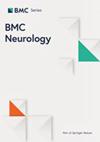The relationship between HbA1c and the activities of daily living in complex chronic patients with and without intracerebral hemorrhage
IF 2.2
3区 医学
Q3 CLINICAL NEUROLOGY
引用次数: 0
Abstract
Associations between HbA1c and adverse outcomes in ischemic and hemorrhagic stroke have been confirmed. It is still unclear whether HbA1c is related to the activities of daily living (ADL) score in complex chronic patients (CCP) with and without intracerebral hemorrhage (ICH). The associations between HbA1c and ADL (Barthel score) in CCP with ICH and without ICH were evaluated, respectively. We have analyzed data from a previous cohort study involving in 3594 CCPs without a ICH history at baseline, who were followed up for 5 years to assess ICH episode. One hundred sixty-one ICH case were detected in a total of 3594 patients during the period of follow up for 5 years. Our nonlinear analysis suggested positive trends on the association between HBA1c and Barthel score in ICH and non-ICH patients, respectively. The multivariate linear regression analysis showed that elevated HbA1c was positively associated with a higher Barthel score among all study population (β = 1.25, 95% CI: 0.92, 1.59; P < 0.0001) with adjusted age and sex. Among non-ICH patients, increased HbA1c was still positively associated with an increased Barthel score (β = 1.24, 95% CI: 0.90, 1.58; P < 0.001). However, HbA1c appeared to have no any relationship with Barthel score in ICH patients (β = 1.87, 95% CI: -0.07, 3.82; P = 0.0613) after adjustment for age and sex. By additionally using sensitivity analysis, we still observed that the strong relationship was still existed in non-ICH patients (β = 0.90, 95% CI: 0.56, 1.24; P < 0.001) but not in ICH patients (β = 1.88, 95% CI: -0.10, 3.86; P = 0.0649). We observed for the first time that elevated HbA1c is associated with better ADL in CCPs without ICH but not in those with ICH. This interesting discovery contradicts the traditional adverse effects of elevated HbA1c.患有和未患有脑出血的复杂慢性病患者的 HbA1c 与日常生活活动之间的关系
HbA1c 与缺血性和出血性中风的不良预后之间的关系已得到证实。目前还不清楚 HbA1c 是否与伴有或不伴有脑出血(ICH)的复杂慢性病患者(CCP)的日常生活能力(ADL)评分有关。我们分别评估了有 ICH 和无 ICH 的复杂慢性病患者 HbA1c 与 ADL(Barthel 评分)之间的关系。我们分析了之前一项队列研究的数据,该研究涉及 3594 名基线时无 ICH 病史的 CCP,对他们进行了为期 5 年的随访,以评估 ICH 的发病情况。在为期 5 年的随访期间,共有 3594 名患者中发现了 161 例 ICH 病例。我们的非线性分析表明,在 ICH 和非 ICH 患者中,HBA1c 与 Barthel 评分之间的关系呈正相关趋势。多变量线性回归分析表明,在所有研究人群中,经调整年龄和性别后,HbA1c 升高与 Barthel 评分升高呈正相关(β = 1.25,95% CI:0.92,1.59;P <0.0001)。在非重症肌无力患者中,HbA1c 的增加仍与 Barthel 评分的增加呈正相关(β = 1.24,95% CI:0.90,1.58;P <0.001)。然而,在对年龄和性别进行调整后,HbA1c 似乎与 ICH 患者的 Barthel 评分没有任何关系(β = 1.87,95% CI:-0.07,3.82;P = 0.0613)。通过额外的敏感性分析,我们观察到非 ICH 患者(β = 0.90,95% CI:0.56,1.24;P <0.001)仍然存在这种密切关系,但 ICH 患者(β = 1.88,95% CI:-0.10,3.86;P = 0.0649)则不存在这种密切关系。我们首次观察到,HbA1c 升高与无 ICH 的 CCPs ADL 改善有关,但与 ICH 患者无关。这一有趣的发现与 HbA1c 升高的传统不利影响相矛盾。
本文章由计算机程序翻译,如有差异,请以英文原文为准。
求助全文
约1分钟内获得全文
求助全文
来源期刊

BMC Neurology
医学-临床神经学
CiteScore
4.20
自引率
0.00%
发文量
428
审稿时长
3-8 weeks
期刊介绍:
BMC Neurology is an open access, peer-reviewed journal that considers articles on all aspects of the prevention, diagnosis and management of neurological disorders, as well as related molecular genetics, pathophysiology, and epidemiology.
 求助内容:
求助内容: 应助结果提醒方式:
应助结果提醒方式:


